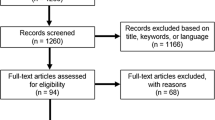Abstract
Essential tremor (ET) is the most common movement disorder with the main clinical features being postural and kinetic tremor in the upper limbs with or without head and voice tremor. Gait ataxia and balance issues may occur as well. Recently, nonmotor symptoms have also been hypothesized to be part of this condition, including cognitive deficits, depression, anxiety, hearing impairment, olfactory dysfunction, and sleep problems. The motor aspects of ET are invariably progressive and may lead to significant impairment in functionality and quality of life. ET therapy includes pharmacological, nonpharmacological, and surgical approaches. First-line pharmacotherapy includes propranolol and primidone, which contribute to symptoms relief; however, potential side effects particularly in elderly patients limit their use. Surgical approaches such as deep brain stimulation (thalamus and posterior subthalamic area) and thalamotomy are also useful, although they have more specific indications and potential side effects. Currently, novel nonpharmacological therapies are in the pipeline for ET treatment, including physiotherapy and rehabilitation, aiming to explore new ways of assisting patients and improving functionality. Resistance training, inertial loading, dexterity training, transcutaneous electrical nerve stimulation, and massage have been proposed and investigated as potential means of rehabilitation in ET. The current chapter summarizes the clinical features of ET and current therapies, focusing on nonpharmacological approaches.
Access this chapter
Tax calculation will be finalised at checkout
Purchases are for personal use only
Similar content being viewed by others
References
Louis ED, Ferreira JJ. How common is the most common adult movement disorder? Update on the worldwide prevalence of essential tremor. Mov Disord. 2010;25(5):534–41.
Gövert F, Deuschl G. Tremor entities and their classification: an update. Curr Opin Neurol. 2015;28(4):393–9.
Louis ED. Essential tremor: from bedside to bench and back to bedside. Curr Opin Neurol. 2014;27(4):461–7.
Chunling W, Zheng X. Review on clinical update of essential tremor. Neurol Sci. 2016;37(4):495–502.
Tio M, Tan E-K. Genetics of essential tremor. Parkinsonism Relat Disord. 2016;22 Suppl 1:S176–8.
Agúndez JA, Jiménez-Jimenez FJ, Alonso-Navarro H, García-Martín E. The potential of LINGO-1 as a therapeutic target for essential tremor. Expert Opin Ther Targets. 2015;19(8):1139–48.
Musacchio T, Purrer V, Papagianni A, Fleischer A, Mackenrodt D, Malsch C, et al. Non-motor symptoms of essential tremor are independent of tremor severity and have an impact on quality of life. Tremor Other Hyperkinet Mov (N Y). 2016;6:361.
Shill HA, Adler CH, Beach TG. Pathology in essential tremor. Parkinsonism Relat Disord. 2012;18:S135–7.
Contarino MF, Groot PFC, van der Meer JN, Bour LJ, Speelman JD, Nederveen AJ, et al. Is there a role for combined EMG-fMRI in exploring the pathophysiology of essential tremor and improving functional neurosurgery? PLoS One. 2012;7(10), e46234.
Broccard FD, Mullen T, Chi YM, Peterson D, Iversen JR, Arnold M, et al. Closed-loop brain-machine-body interfaces for noninvasive rehabilitation of movement disorders. Ann Biomed Eng. 2014;42(8):1573–93.
Ondo W. Essential tremor: what we can learn from current pharmacotherapy. Tremor Other Hyperkinet Mov (N Y). 2016;6:356.
Munhoz RP, Picillo M, Fox SH, Bruno V, Panisset M, Honey CR, Fasano A. Eligibility criteria for deep brain stimulation in Parkinson’s disease, tremor, and dystonia. Can J Neurol Sci. 2016;3:1–10.
Baizabal-Carvallo JF, Kagnoff MN. The safety and efficacy of thalamic deep brain stimulation in essential tremor: 10 years and beyond. J Neurol. 2014;85(5):567–72.
Sequeira G, Keogh JW, Kavanagh JJ. Resistance training can improve fine manual dexterity in essential tremor patients: a preliminary study. Arch Phys Med Rehabil. 2012;93(8):1466–8.
Kavanagh JJ, Wedderburn-Bisshop J, Keogh JWL. Resistance training reduces force tremor and improves manual dexterity in older individuals with essential tremor. J Mot Behav. 2016;48(1):20–30.
Héroux ME, Pari G, Norman KE. The effect of inertial loading on wrist postural tremor in essential tremor. Clin Neurophysiol. 2009;120(5):1020–9.
Budini F, Lowery MM, Hutchinson M, Bradley D, Conroy L, De Vito G. Dexterity training improves manual precision in patients affected by essential tremor. Arch Phys Med Rehabil. 2014;95(4):705–10.
Carroll D, Moore RA, McQuay HJ, Fairman F, Leijon G. Transcutaneous electrical nerve stimulation for chronic pain. Cochrane Database Syst Rev. 2001;3, CD003222.
Munhoz RP, Hanajima R, Ashby P, Lang AE. Acute effect of transcutaneous electrical nerve stimulation on tremor. Mov Disord. 2003;18(2):191–4.
Riou N. Massage therapy for essential tremor: quieting the mind. J Bodyw Mov Ther. 2013;17(4):488–94.
Rao AK, Gillman A, Louis ED. Quantitative gait analysis in essential tremor reveals impairments that are maintained into advanced age. Gait Posture. 2011;34(1):65–70.
Louis ED, Rao AK. Functional aspects of gait in essential tremor: a comparison with age-matched Parkinson’s disease cases dystonia cases and controls. Tremor Other Hyperkinet Mov (N Y). 2015;5:5–308. Center for Research and Digital Scholarship, Columbia University.
Rao AK, Louis ED. Timing control of gait: a study of essential tremor patients vs. age-matched controls. Cerebellum Ataxias. 2016;3(1):5.
Arkadir D, Louis ED. The balance and gait disorder of essential tremor: what does this mean for patients? Ther Adv Neurol Disord. 2013;6(4):229–36.
Author information
Authors and Affiliations
Corresponding author
Editor information
Editors and Affiliations
Rights and permissions
Copyright information
© 2017 Springer International Publishing Switzerland
About this chapter
Cite this chapter
Freitas, M.E., Munhoz, R.P. (2017). Rehabilitation in Essential Tremor. In: Chien, H., Barsottini, O. (eds) Movement Disorders Rehabilitation. Springer, Cham. https://doi.org/10.1007/978-3-319-46062-8_6
Download citation
DOI: https://doi.org/10.1007/978-3-319-46062-8_6
Published:
Publisher Name: Springer, Cham
Print ISBN: 978-3-319-46060-4
Online ISBN: 978-3-319-46062-8
eBook Packages: MedicineMedicine (R0)




